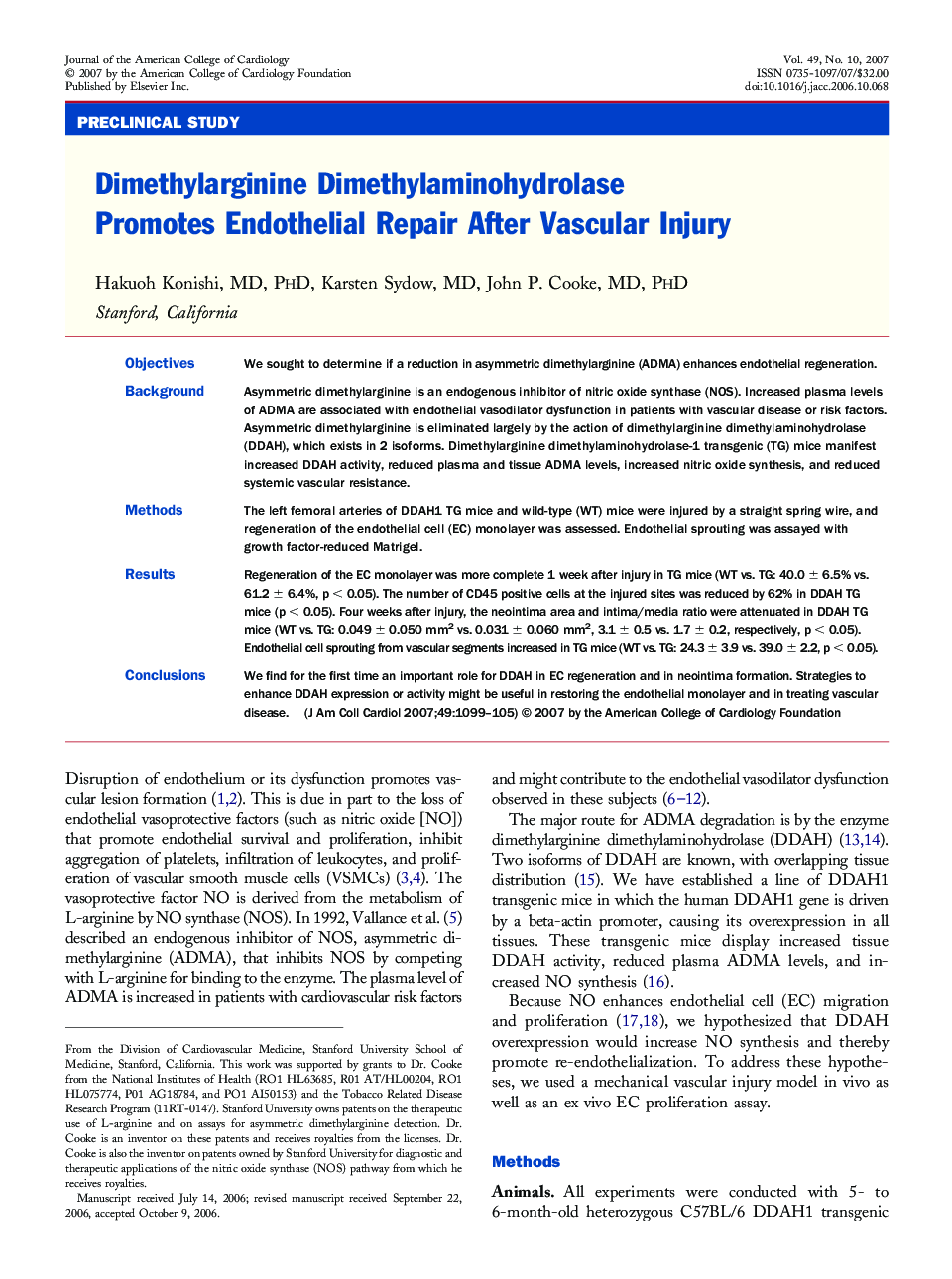| Article ID | Journal | Published Year | Pages | File Type |
|---|---|---|---|---|
| 2953381 | Journal of the American College of Cardiology | 2007 | 7 Pages |
ObjectivesWe sought to determine if a reduction in asymmetric dimethylarginine (ADMA) enhances endothelial regeneration.BackgroundAsymmetric dimethylarginine is an endogenous inhibitor of nitric oxide synthase (NOS). Increased plasma levels of ADMA are associated with endothelial vasodilator dysfunction in patients with vascular disease or risk factors. Asymmetric dimethylarginine is eliminated largely by the action of dimethylarginine dimethylaminohydrolase (DDAH), which exists in 2 isoforms. Dimethylarginine dimethylaminohydrolase-1 transgenic (TG) mice manifest increased DDAH activity, reduced plasma and tissue ADMA levels, increased nitric oxide synthesis, and reduced systemic vascular resistance.MethodsThe left femoral arteries of DDAH1 TG mice and wild-type (WT) mice were injured by a straight spring wire, and regeneration of the endothelial cell (EC) monolayer was assessed. Endothelial sprouting was assayed with growth factor-reduced Matrigel.ResultsRegeneration of the EC monolayer was more complete 1 week after injury in TG mice (WT vs. TG: 40.0 ± 6.5% vs. 61.2 ± 6.4%, p < 0.05). The number of CD45 positive cells at the injured sites was reduced by 62% in DDAH TG mice (p < 0.05). Four weeks after injury, the neointima area and intima/media ratio were attenuated in DDAH TG mice (WT vs. TG: 0.049 ± 0.050 mm2vs. 0.031 ± 0.060 mm2, 3.1 ± 0.5 vs. 1.7 ± 0.2, respectively, p < 0.05). Endothelial cell sprouting from vascular segments increased in TG mice (WT vs. TG: 24.3 ± 3.9 vs. 39.0 ± 2.2, p < 0.05).ConclusionsWe find for the first time an important role for DDAH in EC regeneration and in neointima formation. Strategies to enhance DDAH expression or activity might be useful in restoring the endothelial monolayer and in treating vascular disease.
